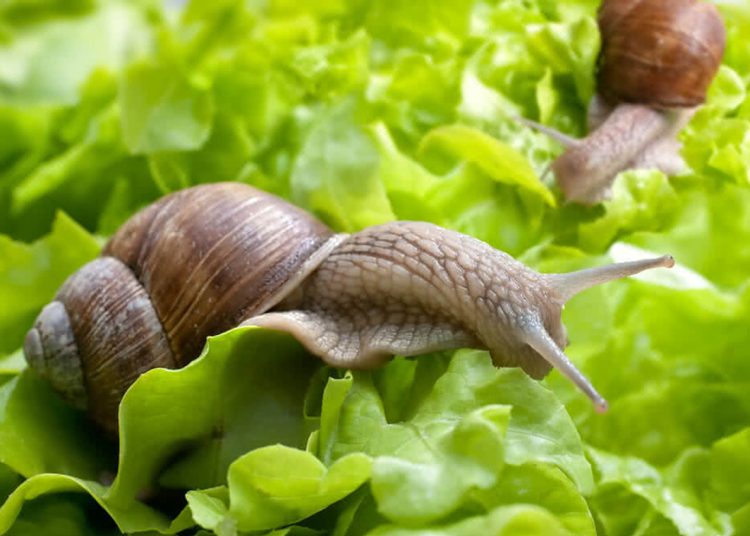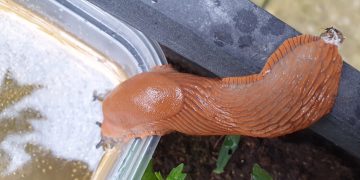Slugs can be a common nuisance in gardens, damaging plants by eating leaves, flowers, and stems. These slimy creatures can quickly turn a flourishing garden into a disheartened patch of foliage. If you're struggling with slugs, don't worry – there are several effective methods to keep them at bay and protect your plants. Here's a comprehensive guide on how to get rid of slugs in your garden.
1. Manual Removal

One of the simplest methods for eliminating slugs is by manually removing them from your plants. Although this may seem time-consuming, it's an effective way to reduce their population, especially during early mornings or evenings when slugs are most active. Wear gloves and collect the slugs by hand, placing them in a container with soapy water to dispose of them.
2. Create Barriers Using Copper

Copper is known to be an effective slug deterrent. Slugs have a natural aversion to copper because it creates an electrical reaction that irritates their slimy bodies. You can create a barrier around your garden by placing copper tape around plant pots, garden beds, or raised garden beds. The copper tape creates a mild electrical shock that repels the slugs, preventing them from crossing over. Read more: Top 10 Best Copper Tape for Slugs
3. Use Diatomaceous Earth

Diatomaceous earth (DE) is a powder made from fossilized remains of tiny aquatic organisms called diatoms. It's a natural and non-toxic substance that can be sprinkled around plants to deter slugs. The sharp particles of DE cut through the soft bodies of slugs, causing them to dry out and die. It's safe for pets and children, making it a great option for organic gardeners.
4. Beer Traps

Slugs are attracted to beer, and you can use this to your advantage. Place shallow containers, like yogurt cups or tuna cans, into the soil so that the rim is level with the ground. Fill them with beer, and slugs will be drawn in, fall into the liquid, and drown. This method can be effective, but it may require regular monitoring and refilling. Read more: How to Make a Beer Trap for Slugs
5. Encourage Natural Predators

Nature has its way of balancing out slug populations. Encourage natural predators such as birds, frogs, toads, and certain types of beetles to visit your garden. You can do this by creating a habitat that attracts these beneficial creatures, like adding birdhouses, water features, and leaf litter. Predators will naturally hunt and reduce slug numbers.
6. Coffee Grounds

Used coffee grounds are another effective, eco-friendly deterrent. Slugs dislike the texture and acidity of coffee grounds. By sprinkling them around your plants, you can create a barrier that slugs will avoid. Additionally, coffee grounds can act as a mild fertilizer, benefiting your plants.
7. Mulch with Sharp or Textured Materials

Mulch made from sharp or rough materials such as crushed eggshells, sand, or wood chips can serve as an obstacle to slugs. These materials irritate the slugs’ soft bodies as they crawl over them, discouraging them from advancing. Make sure the mulch is spread evenly and replenished as needed.
8. Watering Schedule Adjustments

Slugs are most active in damp conditions, so adjusting your watering habits can help reduce their numbers. Water your garden in the morning rather than at night to allow the soil to dry out overnight. Avoid overwatering your plants, as it creates the perfect environment for slugs to thrive.
9. Create a Dry Zone

Slugs prefer moist, cool areas, so creating dry zones within your garden can help discourage them. Use gravel, dry leaves, or other materials in areas where you want to discourage slugs from lingering. Additionally, trimming back dense plants and removing excess debris will reduce hiding spots for slugs during the day.
10. Slug-Repellent Plants

Certain plants are known to naturally repel slugs. Some of these include:
- Lavender
- Thyme
- Rosemary
- Garlic
- Alliums
Planting these around your garden can create a natural barrier and make your space less attractive to slugs. Read more: Top 10 best slug-repellent plants
11. Slug Baits and Pesticides (As a Last Resort)

In extreme cases, commercial slug baits and pesticides can be used to manage an infestation. However, this should be a last resort, as some slug baits contain harmful chemicals that can also kill beneficial insects or harm pets and wildlife. Always follow the instructions carefully and opt for environmentally friendly options when possible.
Conclusion
Dealing with slugs in your garden doesn’t have to be a frustrating experience. By employing a combination of natural, preventative, and manual methods, you can effectively reduce slug populations and protect your plants. Whether you use copper barriers, beer traps, or natural predators, your garden can remain healthy and vibrant, free from the damage slugs can cause.
By using these strategies, you not only protect your plants but also contribute to a healthier, more balanced garden ecosystem.
















